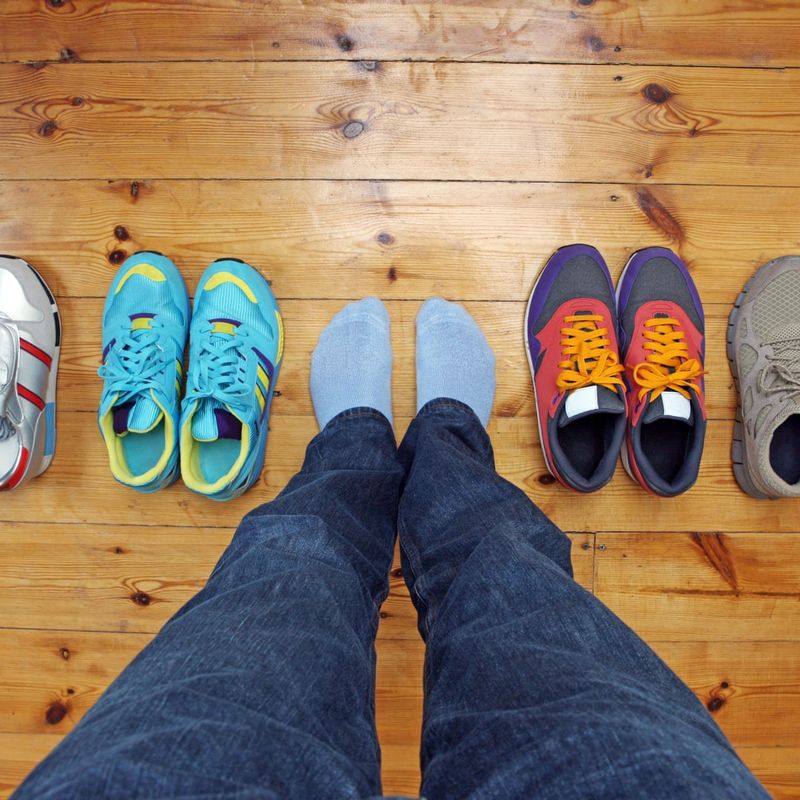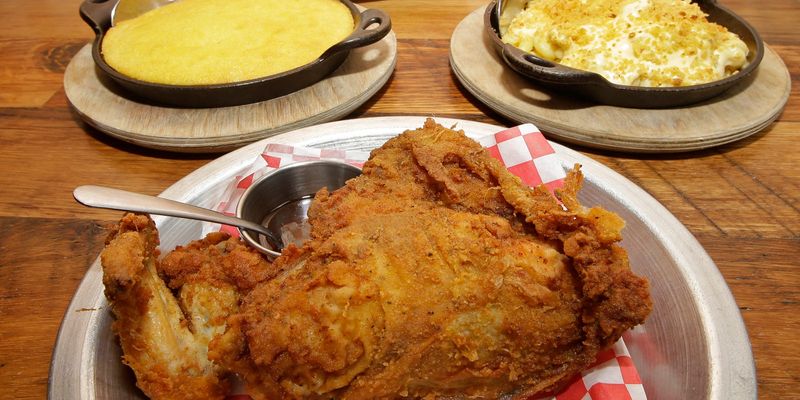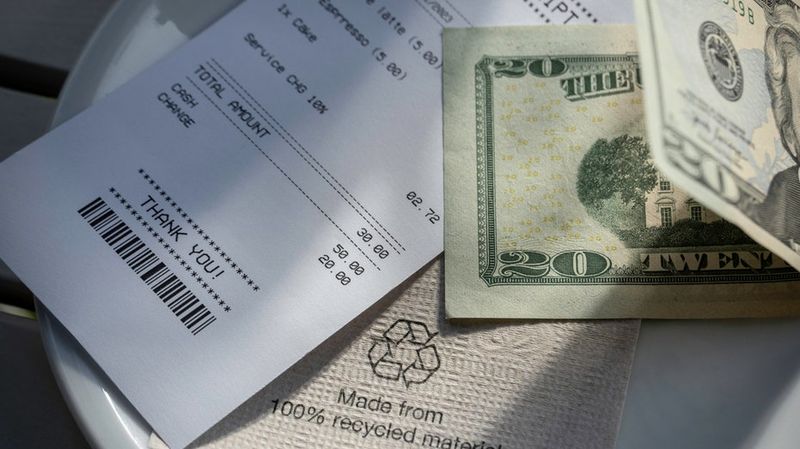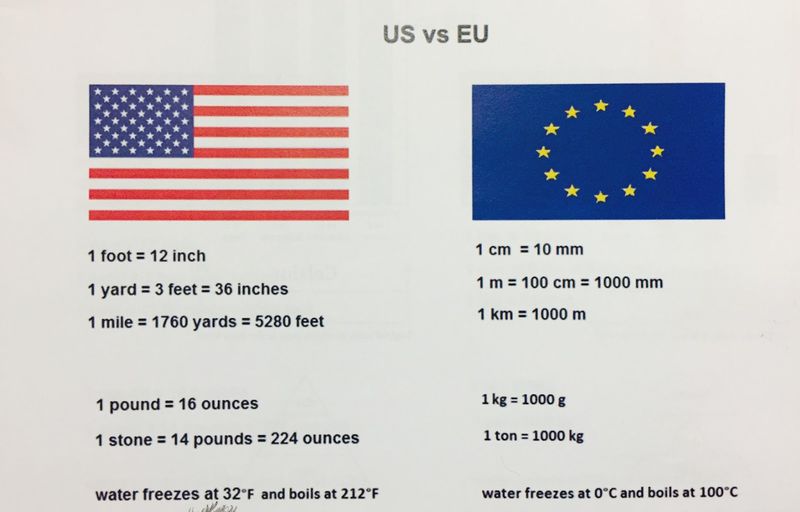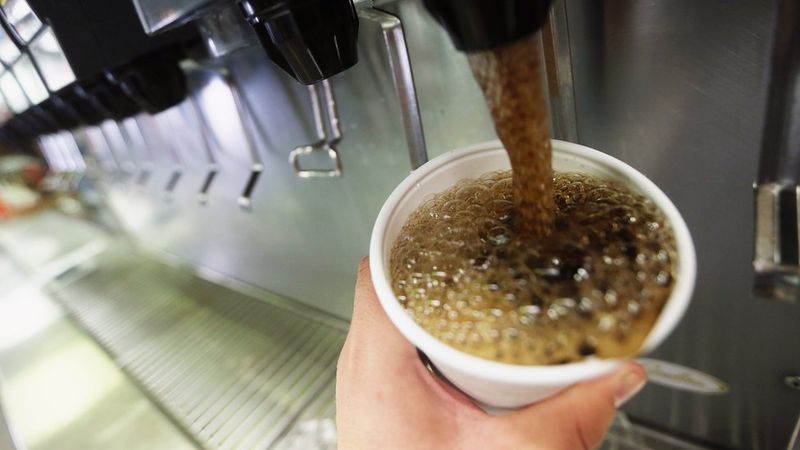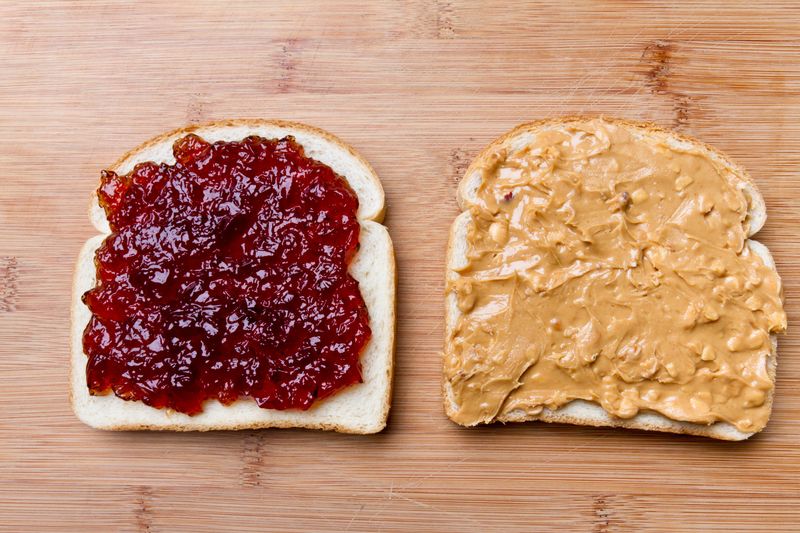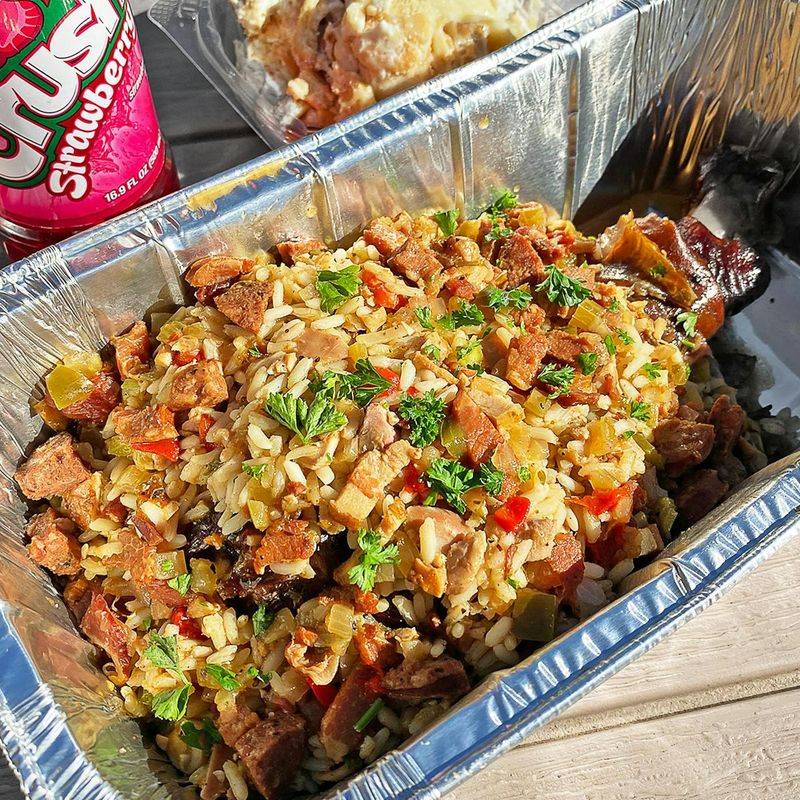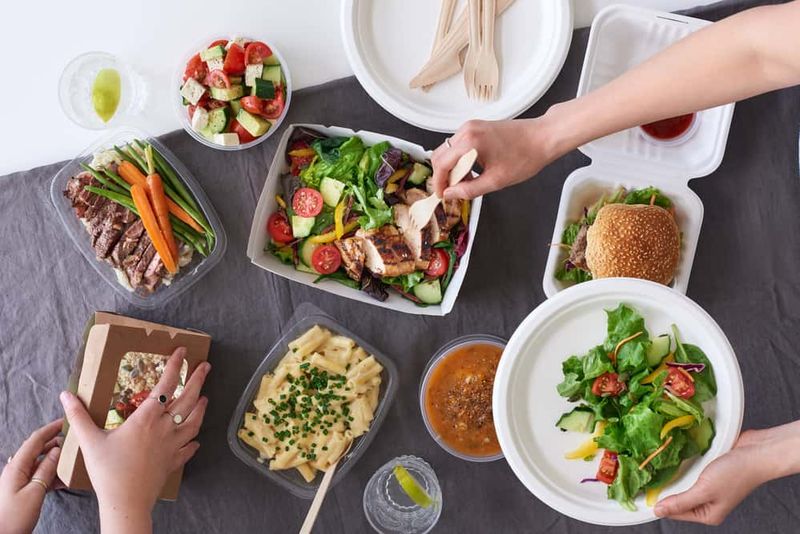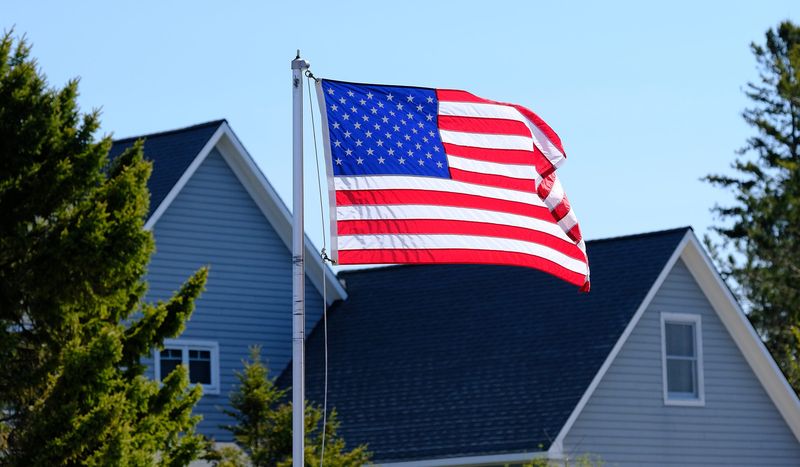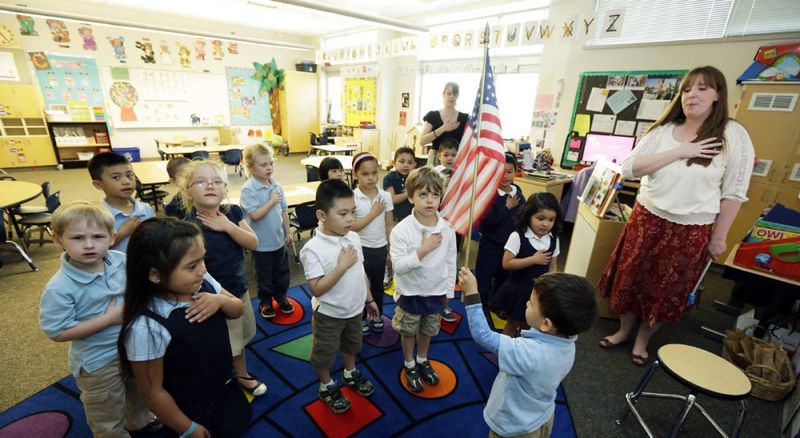Ever wondered why your international friends give you puzzled looks when you do something totally normal? What Americans consider everyday habits can seem downright bizarre to people from other countries. Our cultural quirks, shopping behaviors, and eating habits often leave foreigners bewildered. Here’s a look at the American behaviors that make the rest of the world scratch their heads.
1. Wearing Shoes Inside the House
Americans casually stroll through their homes with outdoor shoes on, a practice that horrifies people from many Asian and European countries. Imagine tracking all that sidewalk grime across your living room carpet!
In Japan, removing shoes is practically sacred, with special slippers for different areas of the house. Many cultures view American shoe-wearing as not just unsanitary but disrespectful to the home environment.
2. Ice-Filled Drinks Year-Round
The American obsession with ice-packed beverages baffles international visitors. Order any drink in the US, and you’ll receive a glass filled to the brim with ice cubes, often containing more frozen water than actual beverage.
In Europe, drinks come lightly chilled or at room temperature. Many Asian cultures believe cold drinks disrupt digestion and body harmony. When foreigners request “no ice,” American servers often look genuinely confused.
3. Supersized Food Portions
Restaurant plates in America often arrive loaded with enough food to feed multiple people. First-time visitors frequently mistake single portions for family-style serving platters!
The concept of “all-you-can-eat” buffets and unlimited breadsticks seems particularly American. In countries like France or Japan, quality trumps quantity, with precisely portioned meals designed to satisfy without overwhelming. The doggie bag concept also puzzles many foreigners who finish their reasonably-sized meals.
4. Mandatory Tipping Culture
The mathematical gymnastics Americans perform after meals leaves international visitors perplexed. Calculating a 15-20% tip isn’t just polite—it’s practically mandatory due to the service industry’s wage structure.
Most countries build service charges into prices or view tipping as an occasional bonus for exceptional service. The American practice of tipping hairdressers, bartenders, food delivery drivers, and even coffee shop baristas creates awkward moments for foreigners unaccustomed to this cultural expectation.
5. Car-Dependent Lifestyle
Americans think nothing of driving two blocks to pick up milk. The sight of massive parking lots stretching farther than football fields astonishes visitors from walkable cities.
Drive-through everything—banks, pharmacies, liquor stores, wedding chapels—represents peak American convenience culture. In Amsterdam or Tokyo, bicycles and efficient public transit make car-free living not just possible but preferable. Many Europeans can’t fathom the American resistance to walkable communities.
6. Clinging to Imperial Measurements
While 95% of the world measures in meters and celsius, Americans stubbornly stick to feet, pounds, and Fahrenheit. Foreign visitors often stand bewildered in grocery stores, attempting mental calculations to understand product sizes.
The American resistance to joining the metric system creates genuine confusion in international business and travel. Many Americans themselves couldn’t explain why we measure soda in liters but milk in gallons, or why we buy fabric by the yard but run races measured in kilometers.
7. Chatting With Complete Strangers
Americans strike up conversations with random people in elevators, checkout lines, and park benches. This friendly openness often startles visitors from cultures where public interaction follows stricter social codes.
The casual “How’s it going?” from store clerks can throw foreigners into existential crises as they prepare thoughtful responses to what Americans treat as mere greeting. In many European and Asian societies, smiling at strangers might be interpreted as suspicious or flirtatious behavior rather than everyday friendliness.
8. Unlimited Drink Refills
Foreign visitors experience childlike delight when discovering their empty soda glass can be refilled repeatedly without additional charges. This uniquely American restaurant perk seems almost too good to be true.
In Europe, ordering a Coke typically gets you a small bottle or glass with precisely measured contents. The American free-refill policy contributes to our reputation for excess and overconsumption. Many international tourists specifically mention unlimited refills as a highlight of American dining experiences.
9. Peanut Butter Obsession
Americans consume peanut butter with an enthusiasm that mystifies much of the world. The classic PB&J sandwich, a staple in American lunchboxes, strikes many foreigners as a bizarre combination of flavors.
In Europe, peanut butter often sits in specialty food aisles rather than as a pantry essential. The American habit of pairing this sticky, savory spread with sweet jelly creates particular confusion. Many international friends trying peanut butter for the first time compare the texture to glue and wonder why Americans feed it to children.
10. College Sports Fanaticism
The passion Americans show for university athletics bewilders international observers. College stadiums holding 100,000 screaming fans, billion-dollar TV contracts, and coaches earning more than university presidents seem uniquely American.
In most countries, universities focus primarily on academics, with sports as a minor extracurricular activity. The concept of student-athletes receiving scholarships and celebrity status for playing games contradicts the educational priorities of many foreign systems. March Madness office pools and college gameday traditions remain puzzling American rituals.
11. Cheese On Everything
Americans sprinkle, spray, stuff, and smother nearly every food with cheese. From cheese-injected pizza crusts to aerosol cheddar, our dairy devotion knows no bounds.
Visitors from lactose-intolerant Asian countries watch in horror as Americans pile cheese onto perfectly good vegetables. Even Europeans, who appreciate fine cheese as a standalone delicacy, question why Americans melt processed cheese product over everything edible. The concept of cheese as a condiment rather than a featured food seems distinctly American.
12. Hollow Greeting Questions
“How are you doing?” In America, this phrase functions as a simple hello—not an actual inquiry about your wellbeing. Foreigners often make the mistake of providing detailed health updates to cashiers who have already moved on to the next customer.
This communication quirk creates awkward moments when international visitors pause to give thoughtful responses. Similarly confusing are American parting phrases like “Let’s get coffee sometime!” which rarely represent actual invitations. These social rituals reflect American friendliness without the expectation of depth.
13. Public Pajama Wearing
Walmart shoppers in plush bathrobes and fluffy slippers barely raise American eyebrows. The casual comfort-first approach to public attire shocks visitors from countries with stricter dress codes.
College students attending lectures in what appears to be sleepwear represents peak American informality. In most European and Asian countries, even quick errands require proper outerwear and presentable clothing. The American philosophy that comfort trumps appearance in public spaces reflects our individualistic values.
14. Disposable Dinnerware at Home
Many American households routinely eat on paper plates and drink from plastic cups—even without guests present. This everyday disposable habit horrifies environmentally-conscious Europeans and frugal Asians alike.
The convenience-over-sustainability mindset extends to plastic cutlery and paper napkins for regular family dinners. In most countries, disposable tableware appears only at picnics or large gatherings. The American preference for avoiding dishwashing by creating more trash exemplifies our convenience culture that puzzles more conservation-minded societies.
15. Flag Displays Everywhere
Americans plaster the stars and stripes across everything—houses, clothing, vehicles, and even swimwear. This constant patriotic display seems almost theatrical to foreigners accustomed to seeing flags only on government buildings or during national celebrations.
In Germany, displaying flags outside official contexts recalls uncomfortable historical associations. Many Europeans find American flag-themed napkins, toothpicks, and underwear bordering on disrespectful rather than patriotic. The casual commercialization of national symbols strikes many international visitors as uniquely American.
16. Americanized “Ethnic” Foods
General Tso’s chicken would baffle actual Chinese people. Fortune cookies? Invented in California. The crunchy taco shell? A Tex-Mex creation unknown in traditional Mexican cuisine.
American adaptations of international foods often bear little resemblance to their supposed origins. Visitors from Italy stare in confusion at stuffed-crust pizzas loaded with non-traditional toppings. The American tendency to sweeten, supersize, and simplify global cuisines creates dishes that would be unrecognizable in their countries of supposed origin.
17. Prescription Drug Commercials
Only in America do pharmaceutical companies advertise prescription medications directly to consumers. These cheerful commercials featuring people frolicking through meadows while narrators speed-read terrifying side effects bewilder international viewers.
In most countries, doctors—not TV ads—determine appropriate medications. Foreign visitors find it jarring to hear advertisements suggesting patients should “ask your doctor about” specific prescription drugs. The concept of consumers diagnosing themselves based on commercials, then requesting specific medications by brand name, seems like dystopian fiction elsewhere.
18. The Pledge of Allegiance Ritual
American schoolchildren start each day standing with hands over hearts, pledging loyalty to the flag. This daily patriotic ritual seems almost cult-like to visitors from other democracies where such practices are rare or nonexistent.
The synchronized recitation by young students particularly unsettles Europeans familiar with historical youth indoctrination. Many democratic nations teach civic values through education rather than daily pledges. The American tradition of children promising allegiance before they’re old enough to understand the concepts represents a uniquely American approach to patriotic education.

